new posts in all blogs
Viewing: Blog Posts Tagged with: concept books, Most Recent at Top [Help]
Results 1 - 25 of 61
How to use this Page
You are viewing the most recent posts tagged with the words: concept books in the JacketFlap blog reader. What is a tag? Think of a tag as a keyword or category label. Tags can both help you find posts on JacketFlap.com as well as provide an easy way for you to "remember" and classify posts for later recall. Try adding a tag yourself by clicking "Add a tag" below a post's header. Scroll down through the list of Recent Posts in the left column and click on a post title that sounds interesting. You can view all posts from a specific blog by clicking the Blog name in the right column, or you can click a 'More Posts from this Blog' link in any individual post.
Swallow the Leader. Danna Smith. Illustrated by Kevin Sherry. 2016. HMH. 32 pages. [Source: Review copy]
First sentence: 1 Fish 2 Fish Follow the leader. Do as I do. Splash when I'm splashing, then I'll follow you.
Premise/plot: Swallow the Leader is an ocean-themed counting book. The fish in the ocean are playing follow the leader. Perhaps because the fish are busy playing together, they are less aware of their surroundings than they should be. But all ends well in this one--for better or worse.
My thoughts: I haven't decided if I like the ending or not. Is that cruel of me? I like this one okay. But I'm not sure I love it.
Text: 3 out of 5
Illustrations: 3 out of 5
Total: 6 out of 10
© 2016 Becky Laney of
Becky's Book Reviews
 Although I reviewed a print version of Infinity and Me book several years ago (my original review is linked here), I recently had the opportunity to review the audio version for School Library Journal. My review as it appeared in the February, 2016, edition of SLJ is below.
Although I reviewed a print version of Infinity and Me book several years ago (my original review is linked here), I recently had the opportunity to review the audio version for School Library Journal. My review as it appeared in the February, 2016, edition of SLJ is below.
HOSFORD, Kate. Infinity and Me. 1 CD w/tr book. 44 min. Live Oak Media. 2015. $29.95. ISBN 9781430120049.
K-Gr 3—A small girl, Uma, ponders infinity while gazing at stars, “How many stars were in the sky? A million? A billion? Maybe the number was as big as infinity.” Uma proceeds to ask friends and family how they conceive of infinity. They define it in quantities of numbers, time, music, ancestors—even spaghetti! Finally, she settles on her own measure of infinity, quantified in something that is personal and boundless. Narrator Nancy Wu is accompanied by a full cast of characters, music, and sound effects that complement the text and the book’s full-bleed, painted illustrations by Gabi Swiatkowska. Background sound effects include a bicycle bell, the “tinkling” of stars, chattering voices, and churning gears. A sense of wonder is embodied in Wu’s narration, the illustrations, and the overall production. The audiobook contains two tracks, one with page turn signals and one without. VERDICT This is an intriguing introduction to a mathematical concept, perfect for those seeking to inspire very young people to wonder about math and science. [“This quiet jewel is sure to spark contemplation and conversation": SLJ 10/12 review of the Carolrhoda book.]
##
Copyright © 2016 Library Journals, LLC, a wholly owned subsidiary of Media Source, Inc.
Reprinted with permission.

Board book: Carry and Learn: Opposites. Sarah Ward. 2016. Scholastic. 10 pages. [Source: Review copy]
First sentence:
ChickenUP and DOWNCluck like a chicken! Premise/plot: Carry and Learn Opposites is a concept board book that can be used with little ones to illustrate ("teach") the concept of opposites. The opposites explored in this book are as follows:
- up and down
- in and out
- big and little
- over and under
- full and empty
Each page has something "interactive" for your little one to do. It may be "making" the chickens jump up and down. It might be "petting" a sheep. It might be making an animal sound. Not all pages are equally interactive and engaging.
My thoughts: I like it well enough. I like the series well enough. I think the pages are easy enough for little ones to turn themselves.
© 2016 Becky Laney of
Becky's Book Reviews
All Year Round. Susan B. Katz. Illustrated by Eiko Ojala. 2016. Scholastic. 32 pages. [Source: Review copy]
First sentence: A world of shapes, twelve months abound, from four-cornered square, to circle, round.
Circle round, ready to roll. Add two sticks, a carrot, and coal. January. Cut out a Heart for a special friend. Write a message, lick, stamp, send. February.
Premise/plot: A picture book teaching TWO concepts. One concept is shapes. The other concept is the months of the year. Each shape shares something about the month. For example, triangle is November's shape. It is the shape of a slice of PIE.
My thoughts: I liked it better than I thought I would. It is a concept book and not a story book, but, it is enjoyable enough. So don't expect it to be as memorable as Maurice Sendak's Chicken Soup with Rice.
Text: 4 out of 5
Illustrations: 3 out of 5
Total: 7 out of 10
© 2016 Becky Laney of
Becky's Book Reviews
Board Book: Counting Dogs (StoryBox Book). Eric Barclay. 2015. Scholastic. 16 pages. [Source: Review copy]
First sentence: One squirrel. Two kangaroos. Three turtles.
Premise/plot: It is a counting book. Various animals are counted.
My thoughts: But is it one dog counting? Or all ten?! It looks like just one dog gets to go on a counting adventure! Or perhaps they take turns being the one dog that gets to count? Regardless the dog in question I would say is definitely curious. But not always depicted as happy and carefree. Sometimes the expression on his face looks doubtful, worried, unsure, alarmed, or even unhappy. (For example, when he's balancing on one leg like a flamingo over the water. He doesn't look happy. And is it a coincidence that the next page has him IN the water counting fish?)
Overall, I was disappointed with this one. Why? Well. The cover looks fun, joyful, inviting. And the story itself, well, it doesn't match that spirit. The front cover, the back cover, the first page, the last page--there is something appealing and joyous about the illustrations. It looks promising. Like it would be a really fun, can't-miss book.
Also: This one says 3 and up.
© 2015 Becky Laney of
Becky's Book Reviews
Board Book: Carry and Learn Shapes. Scholastic. 2015. 10 pages. [Source: Review copy]
First sentence:
TriangleBright, sparkly roofRectangleDoor to a cozy homePremise/plot: A board book for young toddlers that introduces basic shapes. The five shapes introduced are triangle, rectangle, circle, square, and star.
My thoughts: A simple, bright, colorful board book for young ones to hold and carry. The pages are easy to turn. The book is easy to grasp. A few pages offer--or potentially offer--an interactive experience. It may not be a thrilling story, but, it's a serviceable concept book.
© 2015 Becky Laney of
Becky's Book Reviews
Double Play: Monkeying Around With Addition. Betsy Franco. Illustrated by Doug Cushman. 2011. Random House. 32 pages. [Source: Review copy]
First sentence: Br-iiing, the bell for recess time! The kids can gallop, race, and climb. Jill and Jake line up in twos. They peek outside. What will they choose? 1 friend + 1 friend = 2 friends
Premise/plot: Jill and Jake are two monkeys who love recess time. Readers are introduced to ten addition facts worked into the story in rhyme. The story is all about playing at recess time, playing with your friends, enjoying life. Here are some of the addition facts:
- 2 knees + 2 knees = 4 knees
- 3 kids + 3 kids = 6 kids
- 7 bubbles + 7 bubbles = 14 bubbles
- 9 players + 9 players = 18 players
The addition facts go up to twenty.
My thoughts: I liked this one. I didn't love, love, love it. But it was an enjoyable concept book. I liked the rhyme, for the most part, I didn't find it super-annoying. (That can happen sometimes, unfortunately. Not every book needs to try to be Dr. Seuss.) Anyone looking for a math-themed picture book to share with children, should consider this as an option.
Text: 3 out of 5
Illustrations: 3 out of 5
Total: 6 out of 10
© 2015 Becky Laney of
Becky's Book Reviews
Board book: Carry and Learn Numbers. Illustrated by Sarah Ward. 2015. Scholastic. 10 pages. [Source: Review copy]
First sentence:
1 One 1 Giant Elephant Can you stomp like Me?Premise/plot: Carry and Learn Numbers is a concept board book. Little ones are introduced (or reintroduced) to numbers one through five. And it has an animal theme as well. The animals "interact" with readers encouraging them to stomp, stand tall, growl, waddle, and wave.
My thoughts: I liked this one. The pages will be easy for little hands to turn. And the illustrations are certainly sweet enough. I think I loved the giraffes most of all.
© 2015 Becky Laney of
Becky's Book Reviews
Alphabet Trains. Samantha R. Vamos. Illustrated by Ryan O'Rourke. 2015. Charlesbridge. 32 pages. [Source: Review copy]
First sentence: Tear the ticket. Load the freight. Sound the whistle. Raise the gate. Clank! Chug-chug! Whoosh! Alphabet trains.
Premise/plots: Alphabet Trains is a train-themed alphabet book for young readers. An author's note at the back of book provides more information on each train. A few trains are just types of trains, but other trains are specific trains. I like learning which trains are real, and where each train is located. For example, "K is for Komet, traveling through the night. L is for Leonardo Express--a trip to Rome postflight." The note reveals, "The Komet runs overnight between Germany and Switzerland. Like a comet in the sky, the train travels at high speed. The Leonardo Express travels back and forth from the airport in Rome, Italy, to the central train station in the city. The trip is just 30 minutes."
My thoughts: I like this one. I like reading and reviewing train books, because I think train books will always have an audience. Little ones like trains. Some really, really, really love trains. Do you have a favorite train book?
Text: 4 out of 5
Illustrations: 3 out of 5
Total: 7 out of 10
© 2015 Becky Laney of
Becky's Book Reviews
8: An Animal Alphabet. Elisha Cooper. 2015 [July] Scholastic. 40 pages. [Source: Review copy]
First sentence: Find the one animal on each page that is pictured 8 times--8 ants, 8 badgers, 8 chickens. Find all the other animals too. Some may be familiar, such as a cat, and some not, such as a muskrat. (For help, see the "Did you know?" section in the back.)
Premise/Plot. Each alphabet page features lots of animals. Only one animal, however, is pictured 8 times. All animals for each page are listed in small print at the bottom of the page. The book concludes with a "Did You Know?" page sharing facts about all the animals.
My thoughts: I didn't love it. I didn't hate it. I liked it well enough. If you're looking for a counting-to-eight concept book, an alphabet concept book, or, a book about animals, then this one may prove satisfying.
Text: 3 out of 5
Illustration: 3 out of 5
Total: 6 out of 10
© 2015 Becky Laney of
Becky's Book Reviews
Board book: Red Light, Green Light. Yumi Heo. 2015. [June] Scholastic. 20 pages. [Source: Review copy]
First sentence: Let's take a ride. Here's your seat! We'll drive down this: One way street!
Premise/plot: Red Light, Green Light is a concept board book on driving and road signs. It's a lift-the-flap book. Each sign is a flap that can be lifted to reveal what it means.
My thoughts: It's okay. Not wow-worthy perhaps. It's obviously focusing more on the teaching elements, but, it does have a slight story to it. The family is on the way to the playground. Some of the rhymes work okay for me. Some don't. For example, "Slow down, car, the brakes go pop. Traffic light says red means stop."
© 2015 Becky Laney of
Becky's Book Reviews
Who says ABC books are just for babies? Why can’t you mix up some colors using just your finger, no paint? The following concept books defy conventions — and expectations.
 In Mix It Up!, Hervé Tullet follows the same format as in his hugely entertaining Press Here, but this time the play is focused on colors and what happens when you mix them. Children are directed to press on color splotches or to shake or tilt the book to make the colors “mix” or “run.” Turn the pages to see the results. For example, “If you rub the two colors [red and blue] together really hard…then what happens?” (Page-turn: purple!) Lots of fun, with no messy cleanup. (Chronicle/Handprint, 2–5 years)
In Mix It Up!, Hervé Tullet follows the same format as in his hugely entertaining Press Here, but this time the play is focused on colors and what happens when you mix them. Children are directed to press on color splotches or to shake or tilt the book to make the colors “mix” or “run.” Turn the pages to see the results. For example, “If you rub the two colors [red and blue] together really hard…then what happens?” (Page-turn: purple!) Lots of fun, with no messy cleanup. (Chronicle/Handprint, 2–5 years)
 That bright, friendly cube from David A. Carter’s The Happy Little Yellow Box: A Pop-Up Book of Opposites is back in B Is for Box: The Happy Little Yellow Box. This time it’s taking a trip through the alphabet, encouraging children to use pull-tabs, lift-the-flaps, and other interactive features every step of the way. The white text and chalklike drawings on black backgrounds introduce multiple upper- and lowercase letters per page. The bold color contrasts and carefully engineered surprises make for a high-energy alphabet book. (Little Simon, 2–5 years)
That bright, friendly cube from David A. Carter’s The Happy Little Yellow Box: A Pop-Up Book of Opposites is back in B Is for Box: The Happy Little Yellow Box. This time it’s taking a trip through the alphabet, encouraging children to use pull-tabs, lift-the-flaps, and other interactive features every step of the way. The white text and chalklike drawings on black backgrounds introduce multiple upper- and lowercase letters per page. The bold color contrasts and carefully engineered surprises make for a high-energy alphabet book. (Little Simon, 2–5 years)
 Each letter of the alphabet gets its own little four-page story in Oliver Jeffers’s Once Upon an Alphabet. The tales are clever, silly, and thought-provoking; some of them overlap, with characters making their way in and out of one another’s stories. Jeffers’s loose-lined illustrations include lots of visual humor that will appeal to older children who already know their ABCs but can still appreciate a good alphabet book. (Philomel, 5–8 years)
Each letter of the alphabet gets its own little four-page story in Oliver Jeffers’s Once Upon an Alphabet. The tales are clever, silly, and thought-provoking; some of them overlap, with characters making their way in and out of one another’s stories. Jeffers’s loose-lined illustrations include lots of visual humor that will appeal to older children who already know their ABCs but can still appreciate a good alphabet book. (Philomel, 5–8 years)
 The wordless Before After by Anne-Margot Ramstein and Matthias Arégui presents before-and-after sequences: night to day, acorn to oak tree, etc. As the book progresses, some of the sequences become longer (sheep to wool to knitting to sweater), as simple transitions make way for more complex or philosophical ones. Clean, subdued-palette digital illustrations help pave the way for thoughtful discussion. (Candlewick, 5–8 years)
The wordless Before After by Anne-Margot Ramstein and Matthias Arégui presents before-and-after sequences: night to day, acorn to oak tree, etc. As the book progresses, some of the sequences become longer (sheep to wool to knitting to sweater), as simple transitions make way for more complex or philosophical ones. Clean, subdued-palette digital illustrations help pave the way for thoughtful discussion. (Candlewick, 5–8 years)
From the February 2015 issue of Notes from the Horn Book.

The post ABC, easy as 123 appeared first on The Horn Book.

By:
Roger Sutton,
on 10/6/2014
Blog:
Read Roger - The Horn Book editor's rants and raves
(
Login to Add to MyJacketFlap)
JacketFlap tags:
Reviews,
Picture Books,
primary,
Recommended Books,
Concept books,
Horn Book Magazine,
preschool,
Reviews of the Week,
hbmsep14,
Add a tag
 Circle, Square, Moose
Circle, Square, Moose
by Kelly Bingham;
illus. by Paul O. Zelinsky
Preschool, Primary Greenwillow 48 pp.
10/14 978-0-06-229003-8 $17.99 g
Irrepressible Moose (Z Is for Moose, rev. 3/12) is up to his old tricks, trying to force his way into another concept book. This time the subject is shapes, and at first we seem to be reading an old-school shape book (“that sandwich you had for lunch? That is a…square”). The fun begins on the third page, when Moose appears and takes a bite of the sandwich. An offstage narrator addresses Moose directly — “Hey! Don’t eat that!” — in bold-type text. When Moose proves intransigent and ever more disruptive, his old friend Zebra comes to try to save the day. Things grow more and more chaotic until Zebra ends up tangled in the ribbons that illustrate curves; loyal Moose rescues him by turning the sun’s shadow (representing circles) into a hole that takes them clear out of the book. As in the first volume, Zelinsky expertly juxtaposes the expected orderliness of a book with the chaos caused by Moose’s interruption, but this time he steps up the meta elements. The ending is far from pat, but just as true to the characters as that of the first book. On the back endpapers, we see the same exchange that concluded their previous adventure, but the characters have switched places: “Can we do that again?” asks Zebra. “Yes, Zebra. We can do that again.” Adults should be prepared to share this book again and again, as well.
From the September/October 2014 issue of The Horn Book Magazine.

The post Review of Circle, Square, Moose appeared first on The Horn Book.
If... A Mind-Bending New Way of Looking at Big Ideas and Numbers by David J. Smith.
If you're familiar with
If the World Were a Village (also from Kids Can Press), then you'll understand the context in which
If introduces large concepts. Take "Your Life," for example.
On a two-page spread, a large Sicilian-style pizza is depicted on a table surrounded by several happy children and one salivating dog,
If your whole life could be shown as a jumbo pizza, divided into 12 slices ...
4 slices would be the time you spend in school or at work
1 slice would be spent shopping, caring for others and doing things around home
4 slices would be the time you spend getting ready to sleep and sleeping,
etc., until all twelve slices have been accounted for.
Other concepts featured are:
- "Inventions Through Time" - depicted on a 36" measuring tape
- "Our Galaxy" - presented on a dinner plate
- "Water" - represented by 100 water glasses
- and 12 others
In each case, care is taken to equate the concept to something with which children will be familiar. This is a great way to place an intangible concept into a simple object that a child can hold within her hand.
Suggested for grades 3 - 6.
See an interior preview of If at the publisher's website. It's STEM Friday! (STEM is Science, Technology, Engineering, and Mathematics)

Copyright © 2014
L Taylor All Rights Reserved.

Shakespeare's Seasons. Miriam Weiner. Illustrated by Shannon Whitt. 2012. Downtown Bookworks. 32 pages.
Shall I compare thee to a summer's day?Thou art more lovely and more temperate:Rough winds do shake the darling buds of May,And summer's lease hath all too short a date.Though I'm not a big fan of poetry--usually--I am a fan of Shakespeare. Though my appreciation for Shakespeare has only continued to grow as I grow older. (I'm not so sure I *loved* Shakespeare as a teen having to read Romeo and Juliet, Juliet Caesar, MacBeth, etc.) While I'm sure most of his sonnets and a good many of his plays were required reading in college, I haven't always stayed in touch with his work. (Though I've continued to read and reread and reread my favorite plays: Much Ado About Nothing and A Midsummer Night's Dream) So I was excited to see this picture book! Now, did I love each and every page, each and every spread? Did I love every single quote they used? I wouldn't go that far in my praise. But did I like it? Did I appreciate it? Did I like spending time reading and rereading certain pages of it? Did I like the artwork, the illustrations? Yes. Some of the spreads were just lovely. And they highlight, in my opinion, the timeless nature of poetry, of Shakespeare. Of how relevant he remains to each and every generation.
At Christmas I no more desire a rose
Than wish a snow in May's new-fangled shows,
But like of each thing that in season grows. (Love's Labour's Lost)
The purest spring is not so free from mud. (Henry VI, Part 2)
The illustrations are very interesting! Perhaps just as interesting as Shakespeare's quotes!
Read Shakespeare's Seasons
- If you're looking for a poetry-rich picture book to share with children
- If you're looking for a picture book to 'prove' your case that Shakespeare is timeless and continues to be relevant
© 2012 Becky Laney of
Becky's Book Reviews
The Smiley Book of Colors. Ruth Kaiser. 2012. Random House. 32 pages.
The Smiley Book of Colors highlights some of the photos collected for the
Spontaneous Smiley Project. It is also meant to be a concept book. The smiley faces are arranged or sorted by color.
The good news? The photos used in the book are engaging and interesting. While not every reader will "love" the photographs, I think they provide enough interest to make this picture book appealing--at least making it
worth a browse. (I admit some of the pictures are a bit creepy looking.) The end papers provide further interest.
The bad news? Well. To be honest. I found the text a little lacking despite the boasts of the publisher's description: "Readers of all ages will appreciate the witty rhyming text, and its inspirational message about choosing happiness." Granted, I am a bit picky when it comes to rhyming texts. And I admit that I can be hard to please when it comes to rhyming verses--if they don't have rhythm, if they don't have good flow, if they feel too forced or are too over-the-top with sentiment, then I have a hard time getting past it.
Smile! Be happy!
It's contagious--
Like the good feeling you'll get
From these smiley-filled pages.
You'll find smileys
Wherever you turn....
We've found that happiness
Is something you learn.
Decide to notice,
And smileys appear.
You'll giggle! You'll laugh!
You'll grin ear to ear!
Smile! Be happy!
You get to pick--
When something is icky,
Do you focus on ick?
The text didn't bother me horribly at the first. But by the end of this one, I was tired of it. Some verses or stanzas really annoyed me. Of course, it is all subjective. And I suppose there may be readers out there of various ages who don't mind the text and may even like it.
Read The Smiley Book of Colors
- If you love looking at photographs OR taking photographs. The camera lens is used creatively to see the world, and it may inspire you to take your own photographs and start your own project.
- If you are looking for a quirky color-concept book.
- If you like bright, sentimental rhyming books with a positive outlook.
© 2012 Becky Laney of
Becky's Book Reviews

By:
Karen Cioffi,
on 5/9/2012
Blog:
Writing for Children with Karen Cioffi
(
Login to Add to MyJacketFlap)
JacketFlap tags:
Children's books,
picture books,
weather,
rain,
concept books,
water cycle,
tips for teachers,
educational children’s books,
moisture,
transpiration,
vapor droplets,
water cycle classroom activities,
Add a tag
Tradebook Tips for Teachers from Children’s Author Mayra Calvani
The water cycle is included in every science curriculum. Here in Belgium it is taught to fourth grade students. Both elementary and middle school teachers will benefit from my new nonfiction picture book, The Water Cycle. It is the first in a series of four about the weather.
There are many water cycle books out there. My book takes a new angle because in addition to describing the journey of the water droplets from the clouds to the earth and back to the clouds again, it explores the feelings that the different types of weather can evoke in people. The pictures and questions invite children to ponder. For example, rain can make you happy if you’re playing outside in your shiny new boots, but it can make you feel sad and melancholic if you’re indoors and watching from the window. If rain turns into a downpour and eventually a flood, it can evoke in you a whole new set of feelings. The same goes for snow, hail, a blizzard, etc. At the end of the book there are vocabulary activities. At the moment, I’m planning on hiring a teacher to create a complete teacher’s guide. When it’s ready it’ll be available free via my blog and website.
Here are some links to activities about the water cycle that parents and educators can use to complement my book:Diagram, word search crossword, cloze and other worksheets at
http://bogglesworldesl.com/watercycle_worksheets.htmMore water cycle activity pages,
http://www.kidzone.ws/water/Free power point presentations of the water cycle at http://science.pppst.com/watercycle.html
Finally, teachers and parents can show students what they can do to become more ecologically responsible and be ‘hydro-logical’: http://water.epa.gov/learn/kids/drinkingwater/behyrdological.cfm
Thank you, Karen, for this opportunity to talk about my book on your blog!
About the book: The Water Cycle: Water Play Series Book 1, for ages 4-8, follows the water droplets in their journey from the clouds to the earth and back to the clouds again. Written in a lyrical style, the book takes a new angle on the water cycle by showing the feelings it evokes in people. It also has fun learning activities at the end.
What reviewers are saying… “Written in Calvani’s delightful prose, “Huddle inside the CLOUD high up in the sky, the water droplets are excited,” While also complemented by the imaginative artwork of Alexander Morris’ fun illustrations, makes this book both easy to read and informative. The author also includes for her young readers a word search and glossary learning activity—a great addition to every teacher and homeschool parents’ teaching library.” –Carol Fraser Hagen, reading specialist and special education teacher.
You can read the complete review at
http://www.carolfraserhagen.com/2012/04/30/reading-about-science-book-recommendation And, you can check out my review of The Water Cycle at:http://www.karencioffiwritingandmarketing.com/2012/05/review-of-water-cycle-book-1.htmlPurchase The Water Cycle: Water Play Series Book 1 from Guardian Angel Publishing:
14 Comments on Tradebook Tips for Teachers from Children’s Author Mayra Calvani, last added: 5/11/2012
 *Concept book, preschool to kindergarten
*Concept book, preschool to kindergarten
*Forest creatures as main characters
*The layout is one of the best parts of this concept book. It’s a cute idea and well executed!
Short, short summary:
Each pair of pages asks, “Who is in the forest, dark and deep?” and then there is a circle cut-out previewing the next page and animal. For example, there’s a bird, squirrel, and fox. Each animal has a page with a rhyming answer, such as: “Foxes on the prowl–creep, creep, creep.” The end talks about nocturnal animals. There’s a lot to look at and explore with this book–especially for young children.
So what do I do With This Book?
1. You can talk to young children about the forest habitat and what plants and animals they would find there. You can also ask questions like, “Would a penguin belong in this book?” You could even do a KWL (Know, Wonder, Learn) chart if you wanted to further the study of this habitat.
2. Ask children to predict what the next page will say based on the cut-out circle pictures and the predictability of the repeating text and rhyming words.
3. Talk about the difference between nocturnal and diurnal animals after reading the last page of the book. What animals do children see in the last illustration? Are all of those nocturnal animals? What does this mean?
 Green
Green
By Laura Vaccaro Seeger
A Neal Porter Book – Roaring Brook (an imprint of Macmillan)
$16.99
ISBN: 978-1-59643-397-7
Ages 4-8
On shelves March 27th
Sometimes you just want to show a kid a beautiful picture book. Sometimes you also want that book to be recent. That’s the tricky part. Not that there aren’t pretty little picture books churned out of publishing houses every day. Of course there are. But when you want something that distinguishes itself and draws attention without sparkles or glitter the search can be a little fraught. We children’s librarians sit and wait for true beauty to fall into our laps. The last time I saw it happen was Jerry Pinkney’s The Lion and the Mouse. Now I’m seeing it again with Laura Vaccaro Seeger’s Green. I mean just look at that cover. I vacillate between wanting to smear those thick paints with my hands and wanting to lick it to see if it tastes like green frosting. If my weirdness is any kind of a litmus test, kids will definitely get a visceral reaction when they flip through the pages. I know we’re talking colors here but if I were to capture this book in a single word then there’s only one that would do: Delicious.
Open the book and the first pictures you see are of a woodland scene. Two leaves hang off a nearby tree as the text reads “forest green”. Turn the page and those leaves, cut into the paper itself, flip over to two fishies swimming in the deep blue sea. A tortoise swims lazily by, bubbles rising from its head (“sea green”). Another page and the holes of the bubbles are turned over to become the raised bumps on a lime. And so it goes with each new hole or cut connecting one kind of green to another. We see khaki greens, wacky greens, slow greens and glow greens until at last Seeger fills the page with boxes filled with different kinds of green. This is followed by a stop sign and the words “never green” against an autumn background. On the next page it is winter and “no green” followed by an image of a boy planting something. The final spread shows a man and his daughter gazing at a tree. The description: “forever green”. You bet.
 Can a color be political? Absolutely. In a given election season you’ll see red vs. blue, after all. In children’s books colors would historically be associated with races or countries (hence the flare up around titles like Two Reds). Green occupies a hazy middle ground here. We all know about the Green Party or green activism. However, it’s not as if you’ll find many parents forbidding their children to read this book because it pushes a pro-environment agenda. Seeger is subtler than that. Yes, her book does end with humans planting and admiring trees, but thanks to her literary restraint the message isn’t thwapping you over the head with a tire iron. She could have turned her “no green” two-page spread into some barren landfill-esque wasteland. Instead we see a snow scene. This is followed by the only silent two pages i
Can a color be political? Absolutely. In a given election season you’ll see red vs. blue, after all. In children’s books colors would historically be associated with races or countries (hence the flare up around titles like Two Reds). Green occupies a hazy middle ground here. We all know about the Green Party or green activism. However, it’s not as if you’ll find many parents forbidding their children to read this book because it pushes a pro-environment agenda. Seeger is subtler than that. Yes, her book does end with humans planting and admiring trees, but thanks to her literary restraint the message isn’t thwapping you over the head with a tire iron. She could have turned her “no green” two-page spread into some barren landfill-esque wasteland. Instead we see a snow scene. This is followed by the only silent two pages i

*Concept book for preschoolers/kindergarteners
*Little “pirates” as main characters
*Rating: Pirate Nap: A Book of Colors is so cute and perfect for the little guys and gals in our lives who are learning their colors AND fighting to take a nap!
Short, short summary:
Danna Smith tells us about the colors in our little pirates’ lives, using fun rhyme, while Valeria Petrone fills in the blanks with cute and clever illustrations! For example, let’s look at GREEN. “
Mark the spot. We must be brave! Find GREEN treasures in a cave.” The illustration is of the two boys finding green boots in the attic. The story continues as the boys enjoy being pirates, and their mother tries to round them up for a nap. Who will win this power struggle?
So, what do I do with this book?
1. Whether you are reading this to a room full of preschoolers or to your own at home, you can find pirate treasures in the room that are the same color as some of them in the book. What do you have in your room that could be considered a YELLOW treasure? What about GREEN? Make a list together.
2. What rhyming words do your little guys hear when you are reading this book to them? Ask them to raise their hands or point to the page every time they hear a pair of rhyming words. See if they can name some of the pairs when the book is over.
3. Pirate vocabulary runs rampant through this book. Many of your young pirates may know words like “mast” or “loot.” But others might not. Make a list of the words you think are pirate words before you read the book. After you read it and share the illustrations, see if children can define any of the words, using context (text and illustrations).

Jenkins, Steve. 2011.
Just a Second: A different way to look at time. New York: Houghton Mifflin.
What can happen in a second?
Earth advances 18 1/2 miles (30 kilometers) in its orbit around the sun.
What can happen in a day?
People use the equivalent of 200 billion sheets of letter-size paper.
In a year?
A termite queen will lay almost 3,000,000 eggs.
With his trademark illustrative style, customary accuracy, and imaginative perspective, Steve Jenkins shows us the concept of time through a variety of aspects. From the briefest second in which a cheetah can sprint 100 feet, to the unfathomable span of 2,000,000,000 years that it would take a spacecraft to traverse our galaxy, Jenkins offers illustrated facts, charts and graphs that are sure to interest kids of all ages. Facts are presented in white text on colorful pages, accompanied by cut paper illustrations.For teachers, it is a cross-curricular treasure trove. Highly recommended.
Included are books for additional reading and a note about the use of credible estimations for certain facts (e.g., the number of babies born each day).Other reviews @:
I Like Vegetables. Lorena Siminovich. 2011. Candlewick Press. 10 pages.
AboveBelowCarrots
InsideOutsidePeasI Like Vegetables is one of four titles available in Lorena Siminovich's Petit Collage series published by Candlewick. Previous titles include:
I Like Toys (a concept board book about shapes),
I Like Fruit (a concept board book about colors), and
I Like Bugs (a concept board book about counting to five). And I must admit it is one of the best in the series. I thought it was really clever to use vegetables to show opposites! That harvest time is a great time to learn about opposites. The opposites included in the book are: above/below, inside/outside, tall/short, big/little, and empty/full.
It is a touch-and-feel book. And I enjoyed those elements on these pages. I especially liked the carrots and the peas! Well, for that matter I loved the corn too! If I'm being honest, I loved it all! I just *wish* that a touch-and-feel book would try a little harder to get the pumpkin right. Because I am relatively sure that most pumpkins do not feel velvet-like.
It is easy to recommend this one, to recommend the whole series! I just love the art and design of these!!!
© 2011 Becky Laney of
Young Readers
I Like Toys. Lorena Siminovich. 2011. Candlewick Press. 10 pages.
Circleballyo-yocar
Triangleplayhousespinning topsailboatI was a big, big fan of Lorena Siminovich's
I Like Bugs and
I Like Fruit. So I was super-excited to learn that there were two new books in the Petit Collage series: I Like Toys and I Like Vegetables.
I Like Toys is a concept board book about shapes. The circle shape can be found in a ball, a yo-yo, and the tires on a car; the square shape can be found in a jack-in-the-box, a box, and a tower of blocks. Four shapes are includes in all: triangle, rectangle, square, and circle. Each page has a touch-and-feel element to it (the tires on the car, the sail on the sailboat, a block in the block tower, etc.
The art and design of this one makes it fun. While I wouldn't say this is my
favorite book in the series, I can easily say that I'd recommend the series as a whole. The whole series is high quality.
© 2011 Becky Laney of
Young Readers
If Rocks Could Sing: A Discovered Alphabet. Leslie McGuirk. 2011. Random House. 48 pages.
A is for Addition
B is for Bird
C is for Couch potato
D is for Dog
E is for Elephant
What a fun and creative book. Leslie McGuirk shares her unique rock collection with readers in If Rocks Could Sing. She spent years searching for rocks in the shapes of all 26 letters in the alphabet, along with other fun shapes to pair with them. My favorite letters? O is for Ouch!, D is for Dog, and P is for Penguin.
Yes, this is an alphabet book, a concept book. But it is so much more than that. It's just fascinating to look at all the rocks, to learn how this project came together after years of work.
© 2011 Becky Laney of
Young Readers






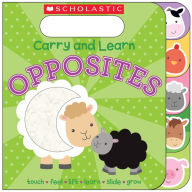
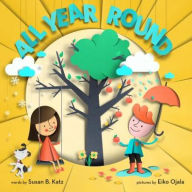



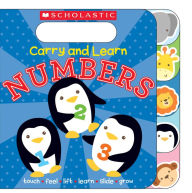
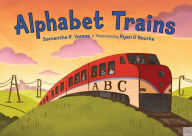
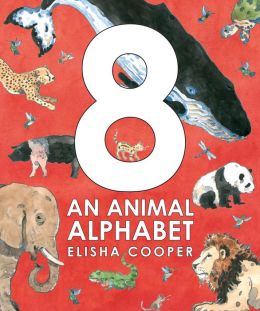
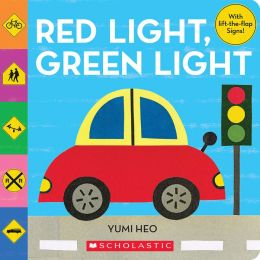
 In Mix It Up!, Hervé Tullet follows the same format as in his hugely entertaining Press Here, but this time the play is focused on colors and what happens when you mix them. Children are directed to press on color splotches or to shake or tilt the book to make the colors “mix” or “run.” Turn the pages to see the results. For example, “If you rub the two colors [red and blue] together really hard…then what happens?” (Page-turn: purple!) Lots of fun, with no messy cleanup. (Chronicle/Handprint, 2–5 years)
In Mix It Up!, Hervé Tullet follows the same format as in his hugely entertaining Press Here, but this time the play is focused on colors and what happens when you mix them. Children are directed to press on color splotches or to shake or tilt the book to make the colors “mix” or “run.” Turn the pages to see the results. For example, “If you rub the two colors [red and blue] together really hard…then what happens?” (Page-turn: purple!) Lots of fun, with no messy cleanup. (Chronicle/Handprint, 2–5 years) That bright, friendly cube from David A. Carter’s The Happy Little Yellow Box: A Pop-Up Book of Opposites is back in B Is for Box: The Happy Little Yellow Box. This time it’s taking a trip through the alphabet, encouraging children to use pull-tabs, lift-the-flaps, and other interactive features every step of the way. The white text and chalklike drawings on black backgrounds introduce multiple upper- and lowercase letters per page. The bold color contrasts and carefully engineered surprises make for a high-energy alphabet book. (Little Simon, 2–5 years)
That bright, friendly cube from David A. Carter’s The Happy Little Yellow Box: A Pop-Up Book of Opposites is back in B Is for Box: The Happy Little Yellow Box. This time it’s taking a trip through the alphabet, encouraging children to use pull-tabs, lift-the-flaps, and other interactive features every step of the way. The white text and chalklike drawings on black backgrounds introduce multiple upper- and lowercase letters per page. The bold color contrasts and carefully engineered surprises make for a high-energy alphabet book. (Little Simon, 2–5 years) Each letter of the alphabet gets its own little four-page story in Oliver Jeffers’s Once Upon an Alphabet. The tales are clever, silly, and thought-provoking; some of them overlap, with characters making their way in and out of one another’s stories. Jeffers’s loose-lined illustrations include lots of visual humor that will appeal to older children who already know their ABCs but can still appreciate a good alphabet book. (Philomel, 5–8 years)
Each letter of the alphabet gets its own little four-page story in Oliver Jeffers’s Once Upon an Alphabet. The tales are clever, silly, and thought-provoking; some of them overlap, with characters making their way in and out of one another’s stories. Jeffers’s loose-lined illustrations include lots of visual humor that will appeal to older children who already know their ABCs but can still appreciate a good alphabet book. (Philomel, 5–8 years) The wordless Before After by Anne-Margot Ramstein and Matthias Arégui presents before-and-after sequences: night to day, acorn to oak tree, etc. As the book progresses, some of the sequences become longer (sheep to wool to knitting to sweater), as simple transitions make way for more complex or philosophical ones. Clean, subdued-palette digital illustrations help pave the way for thoughtful discussion. (Candlewick, 5–8 years)
The wordless Before After by Anne-Margot Ramstein and Matthias Arégui presents before-and-after sequences: night to day, acorn to oak tree, etc. As the book progresses, some of the sequences become longer (sheep to wool to knitting to sweater), as simple transitions make way for more complex or philosophical ones. Clean, subdued-palette digital illustrations help pave the way for thoughtful discussion. (Candlewick, 5–8 years) Circle, Square, Moose
Circle, Square, Moose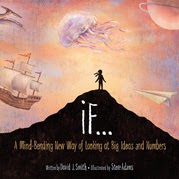


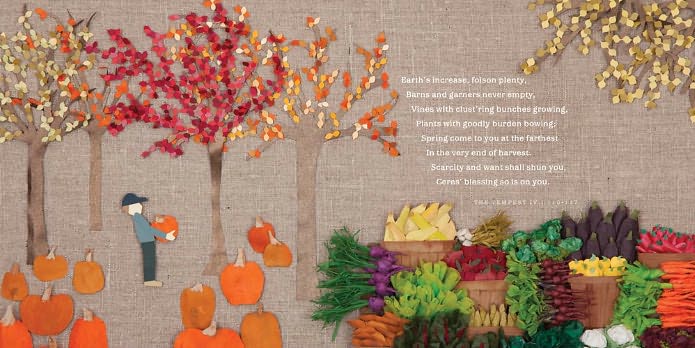








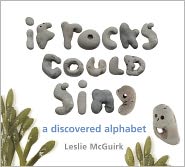
Gifts are the projectors of your emotions. No matter how far you are from your loved terms, just a simple gift can put the lights on the dejected faces of them, who have been missing your presence on their special day. A gift actually brings your inner self before them. Visit www.hampersnationwide.comfor details.